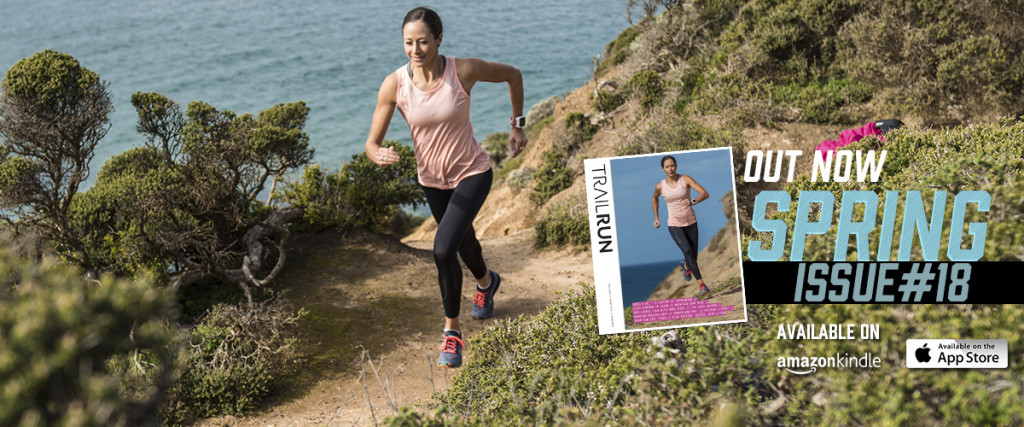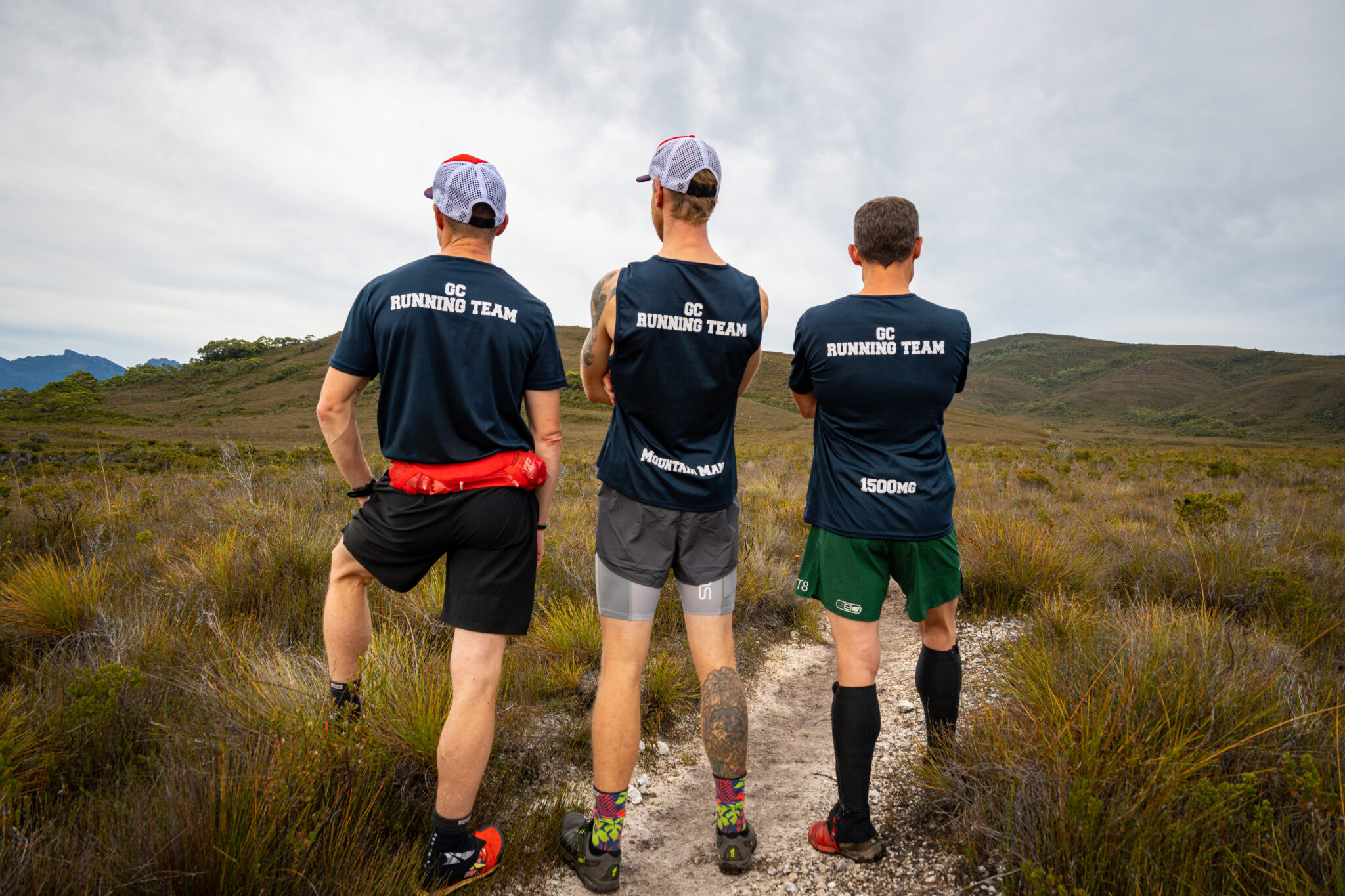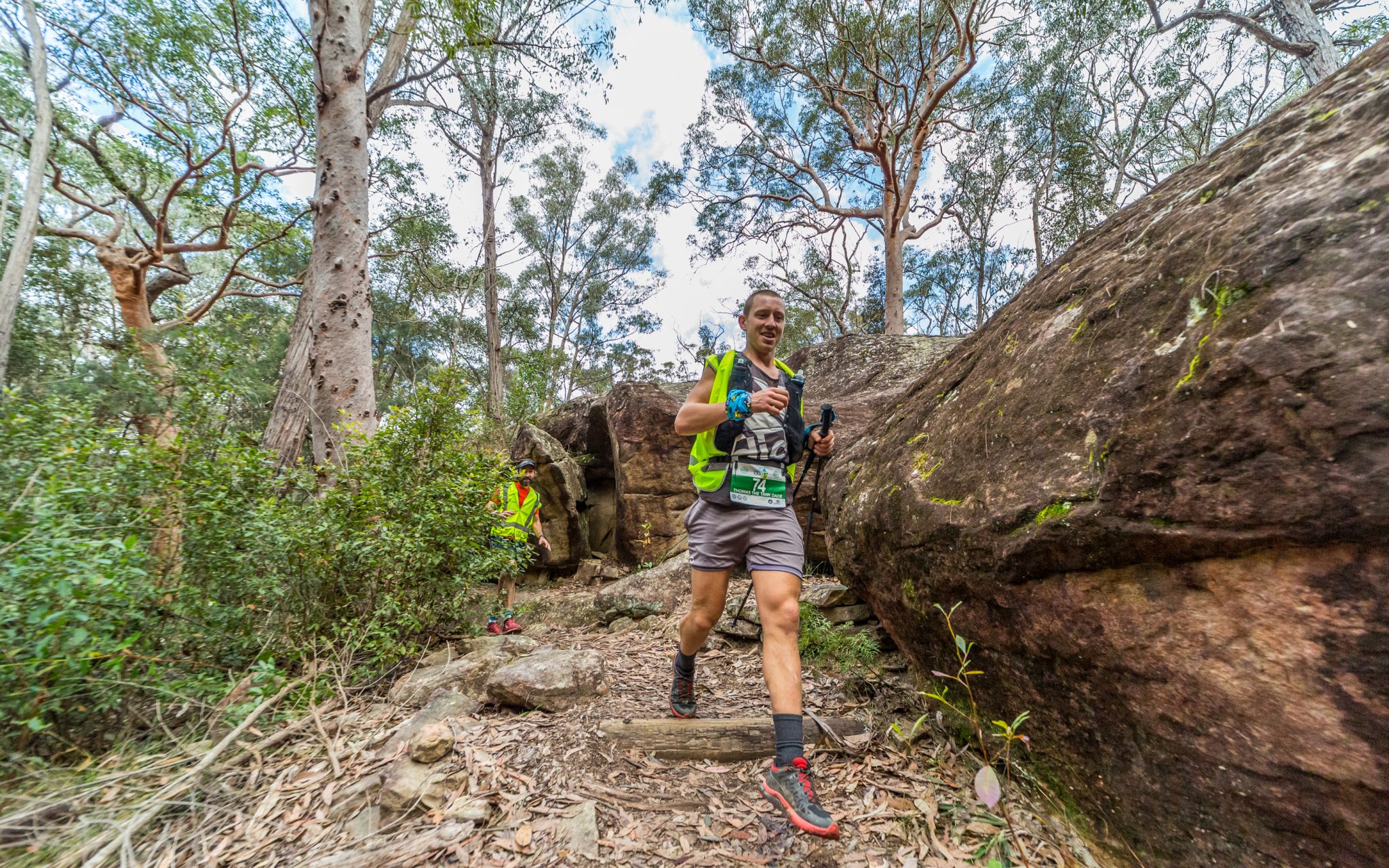This editorial appears in the latest edition of Trail Run Mag (Ed #18), downloadable for FREE here. You can also purchase a subscription on iTunes for your iPad/iPhone or Kindle Fire.
Rebellion hath furthered many a righteous cause. And sometimes I’m glad that there are rebels in our midst risking angry lectures from park rangers at best, prosecution at worst, to forge new singletrack under a canopy of anonymity.
Those who are by day law-abiding, tax paying, voting citizens, become by night (or weekends, or days off), environmental vandals – as the grey suits sitting in grey boxes in grey-walled offices with grey views of the world would likely charge. That is, if they ever caught those singletrack vigilantes who steal into particular patches of wilderness, eyeing off the rise and fall of the land like a Howard Roark character gone wild, before pitching their shovel into the earth and getting dirt on their hands. All in the name of delivering the alchemy of science, art, elbow grease and risk that is guerilla trail building.
I know a friend of a friend of friend who has worked on the legitimate side of trail building but now lurks on the shadowier side. He is approaching bald, hair left in meeting room after meeting room where he met with nothing but incomprehension, disinterest, intractability, and indeed hostility at the idea of building trails through suitable stretches of wilderness. Shock horror – he (and we all) wanted people to actually enjoy the environment. Not through a screen. But in person.
While certainly we need rules and regulations for society to function, sometimes those bureaucratic black and legislative whites don’t pass the muster of logic, context or flat out reasonable-ness. And so civic disobedience has its place and sometimes that place is in the bush because a culture of risk aversion, red tape and burdened process often grinds any moves to open up recreational access to a frustrating halt.
So now the singletrack shadowman, in complete anonymity and with a belief we all have a right to enjoy wild places, builds trails as he pleases.
Now, I’m not arguing that we should all be off ripping into national parks willy nilly, bashing spades into the dirt at the environment’s peril. We’re environmentalists, too. This particular individual has the nous and knowledge to only build sustainable tracks in areas he knows are tied up in bureaucratic nonsense rather than any real environmental concerns. For the most part, few of us would have the skills and thus most of us should remain on the right side of the law.
But as knowers of the landscape, runners also understand a little footfall through large swathes of forest hurts no-one. If brumbys and cattle can run in the high country – backed by (to the writer’s mind and on ground experience patently false) arguments of minimal impact – then the impact of the odd runner sticking to a snaking path is beyond negligible. We don’t eat the bush (unless you’re Beau Miles – reference his Trail Muse piece later in this edition), we don’t hoove up the ground, nor destroy fragile peats, bogs or pummel riverbanks to the point of destroying whole river and billabong ecologies. No, we just run though, smile, appreciate, get back home and tell ourselves we’ll do whatever is necessary to maintain the nature of the nature we love to be in.

The tide is turning, of course, as a new generation moves through the ranks of public and park services. They now ride and run, too. They ‘get it’. And with that turning tide comes greater collaboration with the communities who believe access to areas of wilderness isn’t a gift we are selectively given, but a right we should be given by those caretakers we, as taxpayers, employ.
Sometimes that collaboration just involves turning a blind eye to the odd bit of creative permanent wayfinding – “must be a busy roo run (chuckle).” We’re also sure there are some singletrack saviours fighting the good fight from within the system, keeping a sideways eye on those out there tilling under the moonshine, each in tacit agreement that all shall be done with an eye to environmental responsibility.
I’m no anarchist (unless you count my past working for the Ramblers’ Association in the UK as being employed by a vigilante trails group – they were borne of an access protest that ended in incarceration, as it happens), but I believe a little activism is sometimes warranted in fighting for what Parks Victoria herald as: Healthy Parks, Healthy People. Its slogan, of course, implies that getting more people into nature is the aim of the game, one with which we trail runners fervently agree. To do that, however, you need to have access. For access you need trails. Legal trails preferably, but in the absence of land management motivation, what’s a renegade trail hound to do…?
Your bureaucracy fatigued AU editor, Chris Ord
NB: I reiterate the point, I’m expressly NOT encouraging you all to head out to start blithely building trails! No, no, no…but if you find one, may as well run it.
This editorial appears in the latest edition of Trail Run Mag (Ed #18), downloadable for FREE here. You can also purchase a subscription on iTunes for your iPad/iPhone or Kindle Fire.
ADDENDUM: IMPORTANT READER RESPONSE
Off the back of the editorial above, we received a strong right of reader reply, one that indeed made us rethink our editorial in some respects, and one we thought had some extremely valid points within. It was enough to shift our thinking some, and we’re okay with admitting that we (I – AU Editor), wrote in haste, with emotional drivers and language, which resulted in an inflammatory and perhaps reckless piece. However, we believe the piece and more importantly the reply below, brings to light some excellent thinking from the reader, so we’ll leave both here published, to show how one man’s rant can be another man’s call to order and correction. Simply, I got schooled. And that’s not a bad thing. We’re more than happy to further the debate and shift our thinking accordingly. Thanks to J, the reader who submitted (identity has requested to remain anonymous as he works in the land management sector and need not be linked back to his particular position in such):
J: No, no, no. The mate of a mate of a mate, who used to be “in the system” and now isn’t, is no longer aware of the planning surrounding the landscapes he is building in. That chunk of land that is “held up by bureaucratic bickering” (or so he remembers) may now be a centerpiece of a plan of ecosystem connectedness, but old mate wouldn’t have a clue. The wild places that we run in support a lot more important processes than allowing people to run on quieter trail.
This piece sounds like it is romanticizing illegal trail building and trivializes the impacts of it. Encouraging people to run on known illegal trails that they see means adding to the problems that the trails present. I wonder, how are the readers supposed to tell if the ghost trail in front of them was built by your trail fairy mate who has the Midas touch or if it was built by johnny-cum-trailrunner dude who reckons “there’s a rad line over some sketchy rocks, like in Killian’s videos” (incidentally skink habitat) that all of us dooooods just have to film with our gopro set ups.
This is so important that I will get specific about what I think is dangerous about the piece. I think you guys do a good job of covering events and other stuff that I’ve seen, and I know this is an opinion piece, and I am happy to see that you welcome other points of view. So here is what I find scary:
“…the idea of building trails through suitable stretches of wilderness.” — Wilderness has a pretty specific definition in most areas of Australia. Are you really talking about cutting unauthorised trail in wilderness areas? If so, this is so sad that I want to throw up on my keyboard here!
“This particular individual has the nous and knowledge to only build sustainable tracks in areas he knows are tied up in bureaucratic nonsense rather than any real environmental concerns”. — Please let us know how this conclusion was arrived at. Parks are managed as a system, a mosaic of assets, not individual chunks of land. Among so many other issues of interconnectedness, in this system there are offsets being allocated, which means the relative ecological significance of sites is in flux. Does you mate have access to this information on a weekly/monthly basis? Is your mate an expert on all flora and fauna in the country, migration routes, indigenous heritage and hydrology? I can already answer that question, no, he is not. No one person is adequately credentialed to make that kind of call, the bureaucracy acknowledges that, and I am glad.
“But as knowers of the landscape, runners also understand a little footfall through large swathes of forest hurts no-one”. — A bit of footfall (ie random off track exploration) and cutting a “snaking path” are different things entirely. I think this sentence either over-estimates the knowledge most runners have of “landscape” or underestimates how complex and fragile our ecosystems are… probably both.
“The tide is turning, of course, as a new generation moves through the ranks of public and park services. They now ride and run, too. They ‘get it’.” — What is this based on? The best trail runner Australia has even seen was a park ranger. [Ed’s note: Andy Kromar, for those wondering]
“No, we just run though, smile, appreciate, get back home and tell ourselves we’ll do whatever is necessary to maintain the nature of the nature we love to be in.” — This doesn’t make sense to me. You espouse “I’m expressly NOT encouraging you all to head out to start blithely building trails! No, no, no…but if you find one, may as well run it. “, so one thing that we won’t do is take time to check and then run only on sanctioned trails, and trust that hundreds (or thousands) of environmentally conscious (and mostly specifically educated) people whose job it is to protect our natural areas, might have a broader perspective on the importance of the condition of our local park?
“… getting more people into nature is the aim of the game, one with which we trail runners fervently agree. To do that, however, you need to have access.” — I get the impression that what is happening by the shovel of your mate is the extension of existing trail networks, perhaps some sweet singletrack offshoots of a wider gravel walking trail. If so, he isn’t increasing the number of people who access parks when he does this, instead he makes formerly intact areas less inviting for people to go and look at and be part of, which probably means less people going to look at them and visiting parks at all. Why does he do this? So that people who are active and use parks anyway can have an extra 3km of gnar on their 15km trail loop. Let me know if I’m wrong, but if this doesn’t describe what your mate is doing, it almost certainly describes what other self-appointed “sustainable trail builders” are doing all over the place and we all see it.
This brings up another point, the article sounds as though it authorises us to self-nominate to the group of a “few” who have the “nous” to build sustainable trail because we’ve worked with the environment in some capacity before. So bad!
I understand that you’ve said “most of us” shouldn’t build trail without authority, but that falls waaaaaaay short of my expectations of our community. There is such a thing as trail advocacy, and I’m sorry to hear that you and your mate are tired of the process. Illegal building is not the answer, but more people who read you magazine becoming involved in planning process might be. This piece misses an opportunity to be a call to arms (not literally) for your readers to become more engaged, and instead encourages us to become as disillusioned with the only process that will actually improve an already pretty great situation in the long term. The loser, in the end, is the environment that we cherish the chance to run through.
ENDS
Ed’s note: Thanks J. Well-reasoned and some great points in there. While I won’t dive back in to reply to some specifics where I still feel I had a point (okay, mostly I got schooled), I will pick up JP’s point about trail advocacy. A great one. I’m actually a member of a trails advocacy group as it happens (which I guess makes the editorial in and of itself even more head-scratching, admittedly. Stay away from late night work and a glass of wine, kiddies). So JP may well say you should know better. So I should. And I too encourage all to volunteer to their local trail group, who work in with ‘the system’ to work towards that balance of protection and access for all.
That said, as in correspondence to J:
“The specific trail/s this piece came off the back of run through areas that in many ways may not be regarded as wilderness, and indeed factually are not ecologically sensitive, as part of any broader system or otherwise. Those within the system admit that while sometimes all your (J’s) reasoning is why trails aren’t and shouldn’t be built, they also admit that there are just as many cases where realistically there’s no reason for a trail not to go through a particular patch, bar economic and risk (not enough money for land managers to upkeep, no enabled way for volunteers to be empowered to take management of that trail upkeep, and the aversion to perceived risk of litigation. In terms of actual impact on environment, there are absolutely examples where trails would be fine. More broadly however, I agree with your well-made arguments – the system exists for very valid reasons, and in the main does very much more positive, beneficial work. And you are right if it’s a choice of unchecked impacts versus no access, no impact regardless of perceived ‘rights’ of access, then I guess no access is the lesser of two evils (rather a strong word… there’s no evil in any of this on either side of the debate).
“The more I live, the more I learn. The more I learn, the more I realize, the less I know.” ― Michel Legrand







